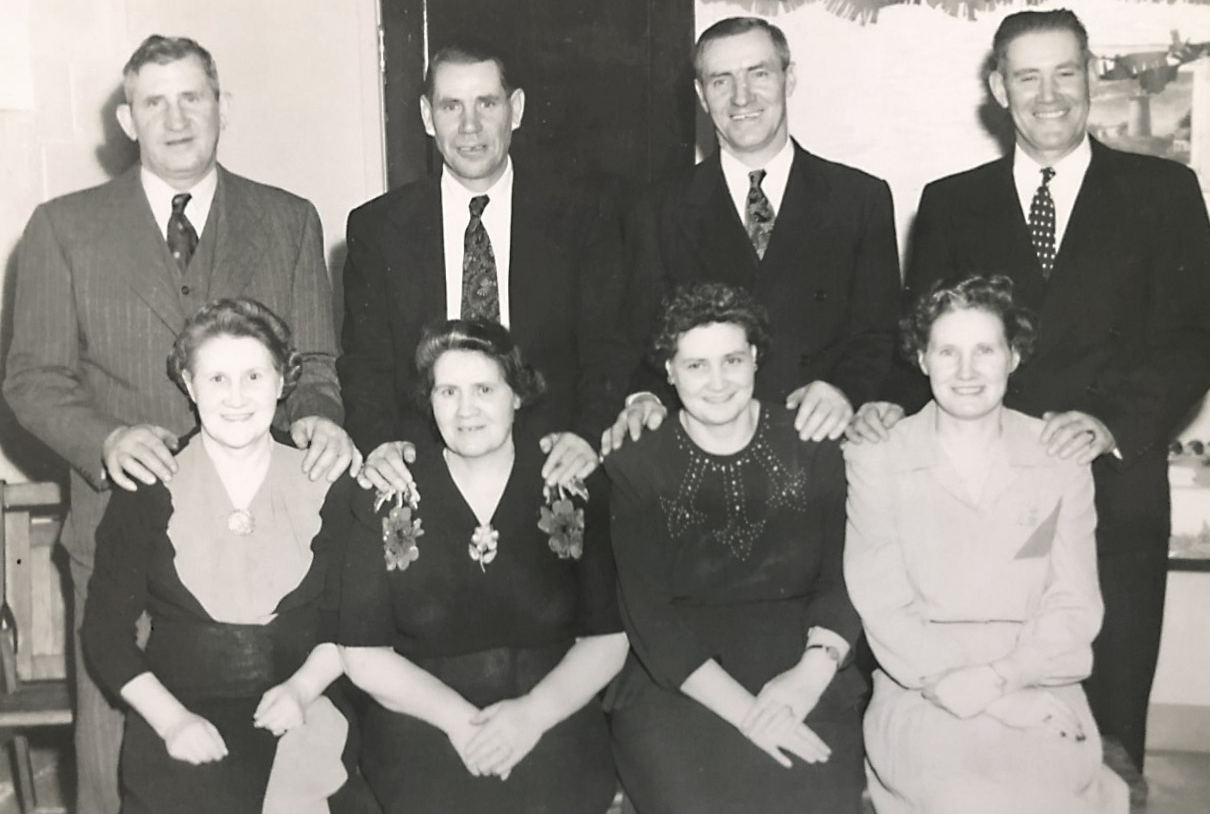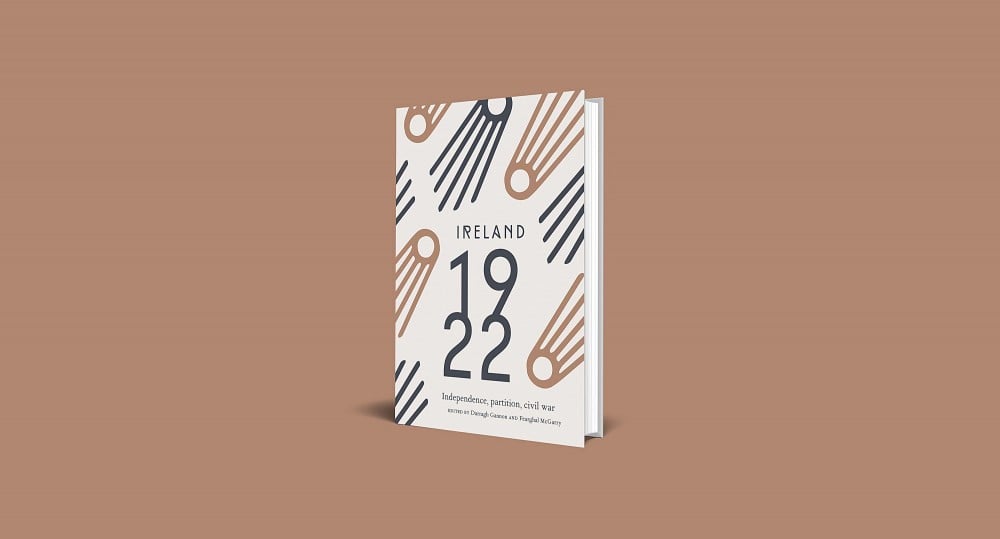7 July 1922: Free State Forces Attack Skeog House
Resolve
by Breandán Mac Suibhne
On Wednesday, 6 May 1981, the Detroit Free Press sent staff reporter Robert H. Emmers to the Gaelic League bar on Michigan Avenue to get local reaction to events in Ireland. There, Emmers found an old man sitting at the end of the bar, drinking whiskey and pulling on Lucky Strikes, the smoke slowly curling above him. Opposite him on the wall was a greying poster of the 1916 Proclamation with portraits of its seven signatories. Surveying the dim lounge, Emmers saw another face, that of Bobby Sands, laughing up from fliers scattered around the bar; the fliers carried details of a memorial service—he had died the previous day at 27 years of age.¹
The old man was George McCallion, who in 1925, also aged 27, had arrived in Detroit from Derry. The League had been established five years earlier, in 1920. Detroit’s population had doubled over the previous decade, from 465,766 in 1910 to 933,678 in 1920, with the city becoming the US’s fourth-largest urban centre after New York, Chicago and Philadelphia. Many of the newcomers were Irish, lured by the city’s car factories. In the 1920s Detroit’s population grew a further 58 per cent, hitting 1,568,662 in 1930, and went on rising until 1950, when it reached 1,849,568. Thereafter, it creaked into rust-belt decline.
George McCallion had seen the rise and fall of Motown, and, in Ireland’s late twentieth-century Troubles, a tragedy long foretold.
McCallion was one of eleven children born to James McCallion (1848–1923), a stonemason, and Mary Ann Deeney (1863–1953). One of his siblings died in infancy and, in the 1920s, all but one of the remaining ten emigrated, eight settling between Dearborn and Detroit; their mother joined those in Michigan in 1928.
On that day in the Gaelic League, McCallion told Emmers that he had come to Detroit to find work, which was true. But it had been politics that made it hard for him to get work at home. McCallion (b. 1898) and a younger brother, Joseph Alphonsus (b. 1900)—Alfie in Ireland, but Joe in America—and an older one, Patrick (b. 1897), had been active republicans in the 1910s and early 1920s. They had fought against the Treaty and, after their defeat, the south was as cold a house as the north.
In truth, all the McCallions were republicans. Once, in October 1920, George and five brothers were arrested together, when the British army found weapons near their home on Berry Street. They passed their time in the cells singing songs.²
George did not mention that incident to Emmers. But on a day when ‘it was all Irish republican talk’ at the bar, the past was close to the present. So the old man did tell of how, in 1917, he had joined the Derry Battalion of the Irish Volunteers and participated in attacks on British convoys and barracks in 1919–21. He told too, as many IRA-men used to tell, a self-deprecating yarn about his lack of arms and training, when he went out to fight an empire. ‘I remember one time’, he said:
We went over into Donegal to attack this police barrack. There was about six of us. Now, we didn’t have many guns, but we did have the dynamite, and we tied it on a board and pushed it up against the barrack wall, thinking we’d blow up half of it. But it only went up in flames, and the police came out shootin’ at us and we had to run like hell.
McCallion might have told Emmers a lot more. He might have told him how, in 1922, he had been the officer commanding IRA units that occupied Skeog House, a mansion near the Derry–Donegal county line, which had recently become ‘the border’. And there, at Skeog, he proved himself a man of no mean resolve. At 4.00 p.m. on Friday, 7 July, Free State troops threw a cordon around the mansion and sent a courier, under a white flag, with a message demanding its surrender. The courier returned with a succinct reply:
In receipt of your demand to surrender barracks to your men. I wish to inform you that, as soldiers of Ireland and the Irish Republic, we will defend the barracks and the cause for which we stand till the last. Signed: George McCallion.
A seven-hour gun-battle ensued, with the attackers using Lewis guns in efforts to dislodge the republicans. Finally, at 11.00 p.m., white flags were hoisted at the house and a gate lodge outpost. The Staters called ceasefire, and some fifty republicans, including one woman, marched out with their hands above their heads—they had exhausted their ammunition. Their only casualty was George McCallion, their officer commanding, who was ‘severely wounded’.³
In 1981 Detroit’s Irish community included supporters and critics of the Provisional IRA, with many of the latter ascribing to the notion, pushed by the Dublin government, that the ‘men of violence’ of the early 1900s were morally superior to those of the late 1900s. On that day in the League, McCallion was critical of the Provisionals, yet not from any qualm about violence: ‘But the fighting over there now, I don’t like the way it’s done’, he told Emmers; ‘The Provos don’t seem to be of much value. In my day, there were no kids in the IRA’.
News reports showing children rioting may have prompted that remark. Certainly, it is the reflection of an old man. His brother Alfie wrote a memoir detailing his own ideological formation: he became politically conscious in childhood, joining the IRB at fifteen, and then at sixteen the Volunteers.⁴
A faded photograph of Terence MacSwiney was passed along the bar. ‘There was a famous man’, McCallion told Emmers, ‘He knew what it was about’. He was alluding, the reporter averred, to the hunger-striker’s dictum: ‘It is not those who can inflict the most, but those who can suffer the most who will conquer’.
And so on that day in 1981, when the world’s gaze turned to Ireland as it had turned when MacSwiney died in 1920, an old man in Detroit sat transfixed by similarities, discomfited by differences, real and imagined, between past and present. In youth, he had apprehended that his generation’s failure to resolve matters meant war would come again to Ireland; and then, when that war did come, when he was old and far away, he understood that it would be a long war.
‘The Treaty of 1921 was a bad treaty’, McCallion told the man from the Free Press, ‘and I am still bitter about it. It’s going to go on and on’.
The fight in his youth and the fight in his old age were the same fight, he was saying. And clear to him was the pity of it all—young people dying when he, who had seen it all, could see where it would end: a conference table and a treaty or, treaty being a dirty word, an agreement, to repair the injustice that had issued from the ‘bad treaty’ that sent him to Skeog House in 1922.
That at least is what he says to me.
Extracted from Ireland 1922 edited by Darragh Gannon and Fearghal McGarry and published by the Royal Irish Academy with support from the Department of Tourism, Culture, Arts, Gaeltacht, Sport and Media under the Decade of Centenaries 2012-2023 programme. Click here to view more articles in this series, or click the image below to visit the RIA website for more information.






















